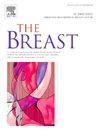细胞周期蛋白依赖性激酶4和6抑制剂(CDK4/6i):耐药机制和在哪里找到它们。
IF 5.7
2区 医学
Q1 OBSTETRICS & GYNECOLOGY
引用次数: 0
摘要
CDK4/6抑制剂(CDK4/6i)联合内分泌治疗对HR + HER2阴性(HER2-)转移性乳腺癌(BC)的治疗有显著影响。然而,尽管进行了大量的研究工作,但对CDK4/6i的新生和获得性耐药机制尚未完全阐明,这突出表明需要更深入地了解这些过程。此外,分离CDK4/6i耐药和内分泌耐药对于个体化治疗的重要性日益被认识到。液体活检已经成为一种微创工具,通过整合包括ctDNA、CTCs、外泌体和表观遗传ctDNA改变的多参数和动态评估,识别耐药循环生物标志物,代表了治疗耐药临床表征和指导进展后策略以改善患者预后的有希望的前景。本综述的目的是总结CDK4/6i耐药的潜在机制,以及在接受cdk4 /6抑制剂治疗的HR+/HER2- MBC患者中使用液体活检识别耐药生物标志物的优势。本文章由计算机程序翻译,如有差异,请以英文原文为准。
Cyclin-dependent kinase 4 and 6 inhibitors (CDK4/6i): Mechanisms of resistance and where to find them
CDK4/6 inhibitors (CDK4/6i) have significantly impacted on the treatment of HR + HER2 negative (HER2-) metastatic breast cancer (BC) when combined with endocrine therapy. Nonetheless, despite significant research efforts, the mechanisms of de novo and acquired resistance to CDK4/6i have not yet been fully elucidated, highlighting the need for a deeper understanding of these process. Additionally, the importance of dissecting CDK4/6i resistance from endocrine resistance for personalized treatment is increasingly recognized.
Liquid biopsy has emerged as a minimally invasive tool for identifying circulating biomarkers of resistance through the integration of multiparametric and dynamic assessments that encompass ctDNA, CTCs, exosomes, and epigenetic ctDNA alterations, representing a promising perspective for the clinical characterization of treatment resistance and guiding post-progression strategies to improve patient outcomes.
Aim of this review is summarize potential mechanisms of CDK4/6i resistance, along with the advantages of using liquid biopsy to identify resistance biomarkers in HR+/HER2- MBC patients treated with CDK 4/6 inhibitors.
求助全文
通过发布文献求助,成功后即可免费获取论文全文。
去求助
来源期刊

Breast
医学-妇产科学
CiteScore
8.70
自引率
2.60%
发文量
165
审稿时长
59 days
期刊介绍:
The Breast is an international, multidisciplinary journal for researchers and clinicians, which focuses on translational and clinical research for the advancement of breast cancer prevention, diagnosis and treatment of all stages.
 求助内容:
求助内容: 应助结果提醒方式:
应助结果提醒方式:


